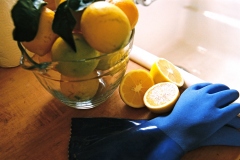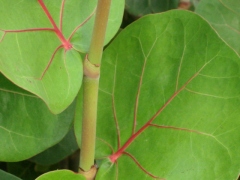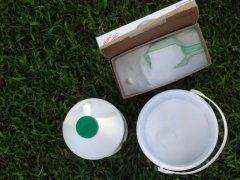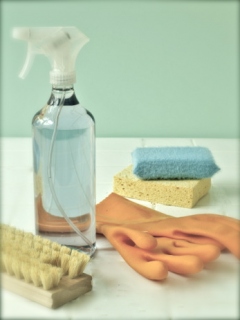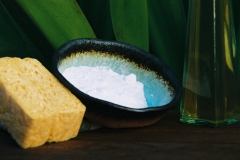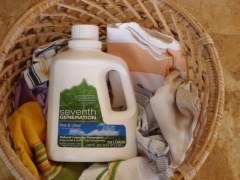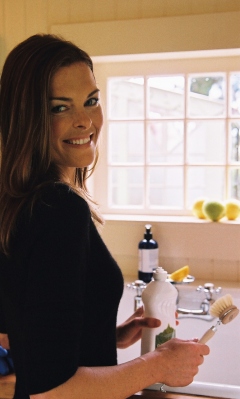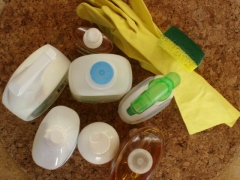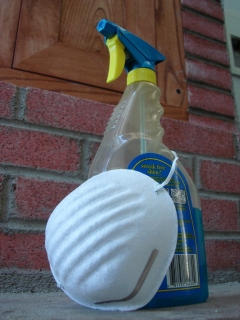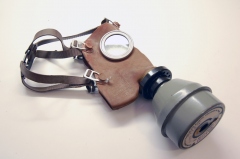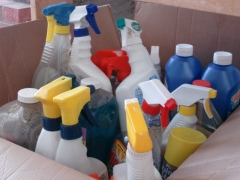Green Cleaning: Attributes + Definitions
Green Cleaning: What to look for on labels
Reading HHCP Labels: Attributs + Definitions
Clean adjective
I. free from dirt, pollutants, or harmful substances (Oxford English Dictionary)
The definition of "clean" is very straightforward. Ironically, the vast majority of conventional household cleaning products (HHCPs) are riddled with harmful substances that do, in fact, pollute our homes and the environment.
Here are some guidelines to help you choose green, nontoxic HHCPs that are eco-smart and human-friendly each and every time.
Look for these words and details on product labels. Remember that like personal care products, what's listed on the back of the label is often more important than the real estate on the front of the label.
Full disclosure of ingredients.
Products that don't have a comprehensive list of ingredients are always suspect of harboring nasty chemicals that may be harmful for humans and the environment. If a product doesn't have an ingredient list or includes ingredients shrouded in vague terms, look for one that does so you know what you're getting into. Look for products with labels that explain ingredients such as "plant-based" surfactants or "natural" fragrances. The more description there is the better. Products that are truly green, nontoxic, and eco-friendly won't be shy to share their attributes on their labels.
Biodegradable.
Products deemed "biodegradable" must break down in to elements found in nature within a reasonable amount of time. Supposedly, there must be competent and reliable scientific evidence to back up the claim and prove a substance will decompose in a reasonably short period of time after customary disposal, though that period of time is not legally defined. While it's illegal to misrepresent a product as being biodegradable, there's no substantial regulation. Look for products that provide information, specifics and qualification to back up biodegradable claims, including full disclosure of plant- and mineral-based ingredients.
Plant-Based & Mineral-Based Ingredients.
Plant-based and mineral-based products are made from renewable resources and, by nature, are biodegradable and generally non-toxic to humans and the environment. Plant-based and mineral-based HHCP (household cleaning products) do their job efficiently without human harm during use and cause minimal eco-impact to manufacture and after use. HHCP that are made entirely of plant-based and mineral-based ingredients are free from toxic chemicals such as chlorine, ammonia, synthetic solvents and surfactants, and artificial fragrances and dyes.
Chlorine-Free.
Chlorine-free products don't contain chlorine, period. Chlorine is not green. It's a toxic substance that is a severe irritant and corrosive to the skin, eyes and lungs. It's dangerous to breathe, touch and is acutely toxic to aquatic life. Oxygen bleach and enzymatic ingredients offer the same disinfecting and whitening properties as chlorine without the human and eco hazards attached.
Solvent-Free and Non-Toxic Solvents.
Chemical solvents are usually called in for heavy-duty cleaning. They effectively cut grime, dirt, oil and soil, but because they are also harmful to delicate ling tissue and skin, they're really dangerous to touch or breathe (1, 2, 3, 4) and are toxic to human organs. Petro-chemical solvents (such as glycol ethers, butyl cellusolve, and ethanolamines) aren't biodegradable, period. Non-biodegradable chemical solvents don't just contaminate some river over yonder, they also build up and contaminate our homes. There is a bevy of solvent-free, non-toxic HHCP capable of heavy-duty action without the harmful hazards posed by chemical solvents. Look for solvent-free cleaners and those that call on the strength of plant-based solvents.
Phosphate-Free.
Phosphates have long-been used in laundry and dish detergents as water-softening agents (to keep detergents from leaving scum all over everything) and for deflocculating action (to keep dirt and grime from settling back during washing). Though they're cheap ingredients that do make detergent work better, they're becoming widely known as an ingredient on the eco no-no list because of the havoc they wreak in water ecosystems, causing algae blooms, suffocating fish and aquatic life, and throwing everything wickedly out of whack on a worldwide scale. The good news is that even major laundry detergent manufacturers are phasing out phosphates, thanks in part to governmental effort to restrict and ban them altogether. The bad news is that some of those manufacturers are opting for petro-based synthetic phosphate substitutes, which cause a different set of eco-hazards. Unfortunately, phosphates are still pretty rampantly used in conventional automatic dish detergents. Look for natural laundry and dish detergents that are phosphate-free, period.
Natural Fragrances.
Who doesn't love a fresh-smelling room? The difference between a fresh, clean smell and a toxic chemical cloak is a very blurry line in the conventional HHCP world. Undisclosed (synthetic or artificial) fragrances are generally very dodgy chemicals and can include just about anything, likely on the coattails of eco-toxic, neuro-toxic, bio-accumulative phthalate compounds, which are used to make fragrances "stick", but are also linked to hormone disruption (5, 6), developmental and reproductive disorders (7, 8) and even cancer (9, 10). Yikes! Look for HHCP that tap into the naturally good smelling and purifying power of natural fragrances derived from plants and essential oils for green, clean-smelling results.
Colorants.
Bright colors can be a beautiful thing, especially in flowers, sunsets, and crayons. But the colorants used in conventional HHCP don't make products work better. Synthetic colorants are generally derived from petro-chemical ingredients and nothing you would especially want the residues of hanging around indeterminately on your dishes, clothing or in your home. Look for natural HHCP that don't conatin colorants or those that opt for harmless plant-based.
Reading Labels: HHPCs (Household Cleaning Products)
Reading labels is the primary way to assess just how eco-friendly and human safe HHCPs (household cleaning products) are. All HHCPs that contain known hazardous chemicals and ingredients must bear a warning label to characterize safety and precautionary warnings, potential risks, and first aid measures in the event of accidents. As you would imagine, the more serious the safety warnings of a product, the more likely it is to harm you and the environment. Products with labels that include a "POISON" or "DANGER" statement are more toxic and hazardous (ie: rubber gloves and a face mask are in order) than those labeled with a "WARNING" or "CAUTION" statement. Know the signal word warning labels; forewarned is forearmed.
"DANGER" and "POISON" : Category I chemicals : Highly Toxic
HHCP that bear the signal words DANGER and/or POISON contain Category I chemicals, which is the most highly toxic and hazardous category for substances. They are fatal and cause severe illness in very small quantities via ingestion, skin absorption and inhalation. Typically corrosive, extremely flammable, highly toxic, poisonous, or all of the above, products that bear these words should be used with extreme caution, including the use of protective gloves, a face mask, perhaps even goggles and in a well-ventilated area, or even better, avoided at all costs. Conventional toilet bowl, oven and drain cleaners often bear this label.
How much is Poisonous?
Category I chemicals are poisonous even in very small doses - less than 50 mg per kg of body weight. This means severe illness or death for an average person who ingests as little as 1 teaspoon or absorbs as much through the skin. For a child, this equates to just a few drops.
Verdict: Extremely Dangerous - unsafe, avoid at all costs
"WARNING" : Category II chemicals : Moderately Toxic
HHCP labels that include the signal word WARNING contain Category II chemicals, which are definitely toxic, though in larger doses than Category I chemicals. They may be fatal if swallowed or inhaled or absorbed through the skin in moderate quantities and are required to bear appropriate first-aid measures in the event of accidents.
How much is Poisonous?
Category II chemicals are poisonous in moderate quantities - 50 to 500 mg per kg of body weight. This means that an average person would only have to ingest 1 teaspoon to 1 ounce to face dire consequences. For a child, it is a much smaller amount.
Verdict: Very Dangerous - unsafe, avoid at all costs
"CAUTION" : Category III chemicals : Slightly Toxic
Most HHCPs carry the word CAUTION on their labels, indicating that the formula is toxic only in sufficiently larges doses. These types of ingredients are classified as Category III chemicals, which though are advisable to handle with caution and keep out of the reach of kids, are relatively safe. Some "nontoxic" products bear the "caution" signal word to indicate that they could cause irritation if they come in direct contact with, say, your eyeballs. If a product lists a precautionary statement such as "in the case of eye contact, flush with water for 15 minutes" or "if swallowed, drink a glass of water", the product is relatively harmless. If accompanied by more serious warnings, such as "may be fatal or cause blindness," then you may want to reconsider using at all in your home.
How much is poisonous?
Category III Chemicals are poisonous only in very large quantities - 500 to 5,000 mg per kg of body weight. That means that a 150 lb. person would have to eat or drink 5.82 oz. by weight (which is more than a 1/2 cup of fluid if the product has the same weight as water) to 58.2 oz. (which is more than a quart of fluid) of the stuff to be poisoned. Excessive skin exposure may result in mild or slight irritation.
Verdict: little to no danger - acceptably safe
No Labeling Words Required: Category IV Chemicals : Non Toxic
HHCP that contain Category IV chemicals, do not require signal word warning labels. Suffice for serious misuse, such as ingesting a pint or so, they are harmless.
Verdict: practically no danger - acceptably safe




